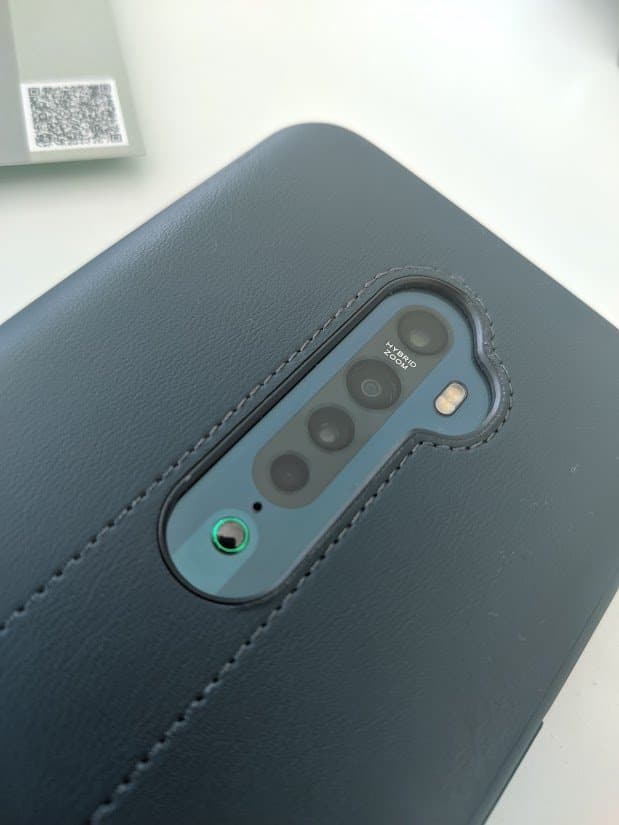Coming to performance, the Oppo Reno2 is powered by the new Snapdragon 730G chipset. On the CPU side of things it has two Kryo 470 Gold (Cortex-A76) cores, clocked at 2.2 GHz, and another six Kryo 470 Silver (Cortex-A55) ones, working at 1.8 GHz. They are all built on an 8nm LPP node and hence pretty power efficient. Both also have the same Adreno 618 DSP. But the one on the 730G is clocked 50 MHz higher and sits at 550 MHz.
Qualcomm is marketing the new SD730G chipset as a ‘gaming’ grade chipset, but let’s take a closer look at the hierarchy. The Snapdragon 730G is technically the fourth chipset in the 700 series. But, in reality, just like the SD712 was nothing more than a beefed-up SD710, the same is true with the base SD730 and the 730G. The marketing strategy for the 700 series of chipsets is that this family of chipsets offer the latest developments in mobile processing, without burning a flagship-sized hole in your wallet. So far, it looks like the strategy seems to be working for Qualcomm and the Reno2 is one of the best examples of the new chipset in action.
It is worth mentioning that the Oppo Reno2 features a ‘performance mode’, which, other than the fancy name, offers nothing too great in terms of real-life performance, and the benchmark scores, which are not very significant when it comes to real-world usage of the device, indicate that even with the ‘performance mode’ turned on, the difference in actual performance is marginal to the point where you might not even notice the change.
That said, the Oppo Reno2 definitely proves itself to be a reliable performer, getting past regular to moderately demanding tasks with ease, and even delivering a more than decent gaming performance.
Table of Contents
Camera – The definitive party piece

Oppo has stressed from the beginning, that their main area of focus is mobile photography, and the Reno2 is another experiment in creating the perfect camera phone.
That being said, though, the major showpiece that is Oppo’s 5x optical periscope camera is notably missing. What remains, however, is a set of surprisingly well-thought-out snappers. First, there is the main 48MP, f/1.7 26mm, 1/2.0″, 0.8 µm unit. It is the same you find on the original Reno and the 10x zoom. Unlike the former and like the latter, it now has OIS. No Laser AF, though, which might be worth noting.

Taking the place of the famous periscope module is a more traditional 13MP, f/2.4, 1/3.4″, 1.0µm telephoto with 2x optical zoom and 5x hybrid zoom.
Next, we have the 8MP, 13mm, f/2.2, 1/3.2″, 1.4µm ultrawide has autofocus as well. This is a lens that you don’t find in most smartphones today, and it looks like Oppo has added it in to enable users to take great high-detail close-up shots.
Finally, we have the 2MP supplementary camera, which is a monochrome black and white unit – f/2.4, 1/5″, 1.75µm. While photography from this lens is probably very 2002, but the real use of this lens is in creating some incredible portrait mode effects as well as color isolation filters.
Coming to the image quality, the 48MP Sony IMX586 sensor uses a Quad-Bayer array and pixel binning – it combines four adjacent pixels into one. The resulting image is reduced to a higher-quality 12MP shot. If these shots are taken in the day, the result is nearly flawless, and some photos are even drool-worthy. There is plenty of detail, high dynamic range, most accurate colors, good contrast, and overall very nice processing. The photos have just the right amount of sharpening applied so detail is highlighted, but there are not too many sharpening halos.
However, there are some cases where the image did appear a bit grainy, which you will see if you really go nitpicking and pixel peeping. Otherwise, the photos are definitely something you can expect from a proper flagship device.

